Top 10 Traditional Skills
Whether it's traditional skills that range from mostly the past ages to the modern age that's now, here are the top 10 traditional skills; some for which is important for us in everyday tasks, especially for the younger generations we should know.
Cooking is a traditional skill involving preparing, timing, roasting/baking/grilling; primarily making your food from scratch and of measurements, general knowledge (basic math, temperature) etc. Traditional cooking skills such as making home-made meals & sauces and even cooking rice entirely from scratch, is unfortunately, slowly fading away on the younger generations, now relying on food chain restaurants, carry-out food & technology. Having the ability to cook & use your own ingredients at home may save you good money rather than in the restaurants.
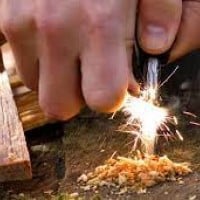
Whether you're camping, hunting, anything in the woods, learning & having the capability to start fires is a vital skill to learn as they provide heat (both for cooking & warmth), people from the past ranging from generations, centuries & millenniums, have started campfires since to cope with nature; there are many ways a campfire can be used, primarily for cooking, boiling water, etc. Fires can be started by multiple methods, via rubbing sticks together; use of flint & steel; primitive tools such as the bow drill, fire pistons, hand drills, etc.

Fishing is a traditional skill requiring patience, knowledge of specific fish and bait types, and a bit of strength. Accuracy is also involved in order to make a good cast; analyzing water bodies is an important essential important for fishing. Other methods of fishing do exist, such as spearfishing, fish nets, fish-farming, etc.
Unlike many of these other skills, it is still used very often.
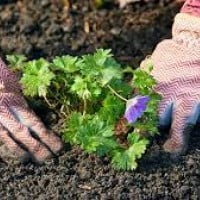
Gardening is a traditional skill requiring maintaining, composting & analyzing soil and perseverance, essential for not only for growing appealing plants but also providing growing food, one of the human basic needs; gardening vegetables/fruit with care which provides free food is a good way to save some money from the grocery; making it an important skill to learn.
Without this, you can forget about growing food.

Handcrafting is one of the traditional methods of craft, referring to varieties of hand-made objects typically using textile, paper, fibers, and various materials; typically made without the use of machines and can be occasionally made with basic tools. Most of the crafting are made creatively & design-wise skillfully purely by hands.
These days, most handcrafting isn't actually done by humans.


Handwriting is one of the traditional skills requiring hand-eye coordination, most fine motor skills and muscle memory. Now it is getting forgotten in the current modern world. In the past, we've relied on clay tablets to express symbols and communication, then later on geese, crows & other bird species feathers as a main source for quills, mainly used as a writing instrument before pens were introduced and became widespread in the 19th century, handwriting is considered a very important skill especially in the past generations and older eras; as in the modern world currently, handwriting is much less of an importance as instead of just pens & papers, we now rely on keyboards, smartphones, and digital technology to create text with less effort without the use of handwriting.
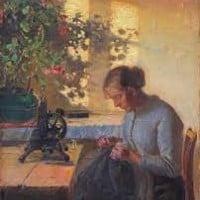
Considered the oldest method on textile production; it's believed that sewing came to existence since the Stone Ages, sewing is often done for mainly clothing & shelter purposes back then; often done by fastening things by stitching along with needle & thread, sewing was typically done by hands before the invention of the sewing machine.
Extremely old and traditional, important for clothing and shelter.
I, surprisingly, have a natural talent for cross-stitch.
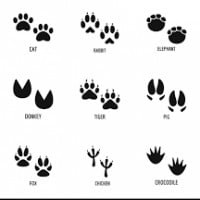
Tracking is one of the traditional skills part of one of the most important elements of survival; requiring stealth, prediction, knowledge of specific animals & recognition of footprints, and observation. For survival purposes, tracking is a vital skill for hunting effective for gathering food; the vast of tribes constantly tracked animals in the long past to hunt their prey for food.
Back when people couldn't just get food at the store, tracking and hunting was employed.
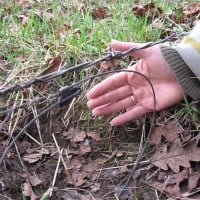
Trapping is an essential survival & rather basic traditional skill practiced through many years and was considered very useful for trapping animals as sources of food and materials such as fur, without having to hunt; with multiple types of primitive traps consisting of dead falls, snares, and pits. Today, trapping is often used for the purpose of animal control.
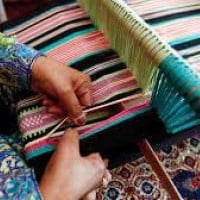
Weaving is one of the traditional skills used for the making & interlacing threads on the making of fabric/textiles, which crosses over & under along with each other, typically used by a loom (preferably a floor loom.) The action of weaving is also done by not only hands but may be done by feet (pedals) in floor looms and other types of looms. Weaving often requires good fine motor skill & hand eye coordination. There are multiple types of looms where weaving work is done such as the handloom, drawloom, etc.
 Swimming is an individual or team sport and activity. Competitive swimming is one of the most popular Olympic sports, with events in freestyle, backstroke, breaststroke, and butterfly.
Swimming is an individual or team sport and activity. Competitive swimming is one of the most popular Olympic sports, with events in freestyle, backstroke, breaststroke, and butterfly.
Extremely useful if a war happens and you are drafted.
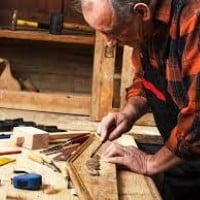
Can be fun to make new things and be able to do something practical.
Carpentry and other woodworking is a very essential skill.


